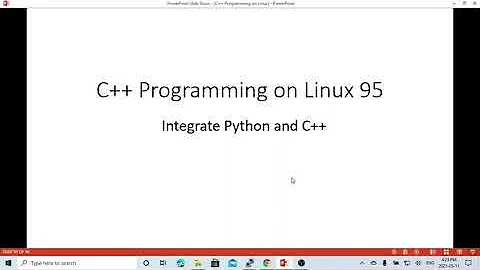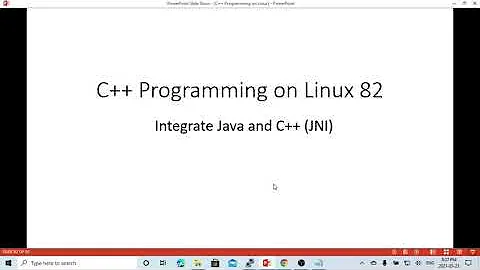How to allocate "huge" pages for C++ application on Linux
Solution 1
You can also try to use transparent huge page support which is available on any kernel from the last several years (at least anything in the 3.x and 4.x range and also various 2.6.x kernels).
The primary benefit is that you don't need to have any special "hugetlbfs" set up, it "just works". The downside is that it is not guaranteed: the kernel may satisfy your allocations with huge pages if some conditions are met and some are available. Unlike hugetlbfs which reserves a fixed number of huge pages at startup, which are only available via specific calls, transparent huge pages carves huge pages out of the general memory pool. This requires contiguous 2MB blocks of physical memory which may become rare as the system remains up time due to physical memory fragmentation.
Furhtermore, there are various kernel tunables which affect whether you get a hugepage or not, the most important of which is /sys/kernel/mm/transparent_hugepage/enabled.
Your best bet is to allocate blocks on a 2MB boundary with posix_memalign and then do a madvise(MADV_HUGEPAGE) on the allocated region before touching it for the first time. It also works with variants like aligned_alloc. In my experience, on systems that have /sys/kernel/mm/transparent_hugepage/enabled set to always this generally results in a hugepage. However, I've mostly used on systems with significant free memory and not-too-long uptime.
If you are using 2GB of memory, you could probably get a significant benefit from huge pages. If you allocate that all in small blocks, e.g. via malloc there is a high chance transparent hugepages won't kick in, so you can also consider allocating in a THP-aware way whatever is using the bulk of your memory (often it is a single object type).
I also wrote a library to determine if you actually got hugepages from any given allocation. This probably isn't useful in a production application, but it can be a helpful diagnostic if you go the route of trying to use THP since at least you can determine if you got them or not.
Solution 2
The "hugetlb" documentation from the kernel should help here.
Users can use the huge page support in Linux kernel by either using the mmap system call or standard SYSV shared memory system calls (shmget, shmat).
And:
Examples
1) map_hugetlb: see tools/testing/selftests/vm/map_hugetlb.c
2) hugepage-shm: see tools/testing/selftests/vm/hugepage-shm.c
3) hugepage-mmap: see tools/testing/selftests/vm/hugepage-mmap.c
4) The libhugetlbfs (https://github.com/libhugetlbfs/libhugetlbfs) library provides a wide range of userspace tools to help with huge page >usability, environment setup, and control.
(These paths refer to the linux source tree).
So it basically boils down to:
- use
mmapwithMAP_HUGETLBflag - or, map a file from the mounted hugetlb filesystem, if it exists
Solution 3
I am assuming you need huge pages only for specific application written in C++ otherwise you just change the page size of your system. Below method will work fine for applications written in any language.
In order to use huge pages for specific application you need to build your kernel for the support of huge page support. you must build kernel with
CONFIG_HUGETLBFSoptions-
Specify page size by specifying
hugepagesz=<size>on boot command line
To see how to set boot parameters: http://www.cyberciti.biz/tips/10-boot-time-parameters-you-should-know-about-the-linux-kernel.html
-
To set the no of huge pages use
# echo 20 > /proc/sys/vm/nr_hugepages -
To check the huge pages (available, total, …)
# cat /proc/meminfo -
When all above goes fine, now you have to work with “how to use these pages for particular application”: mount file system of type
hugetlbfsas# mount -t hugetlbfs -o uid=<value>,gid=<value>,mode=<value>,pagesize=<value>,size=<value>,min_size=<value>,nr_inodes=<value> none /mnt/hugeplace your application on this mount
/mnt/hugeboom now your application will use page size set by you!
For more details check https://www.kernel.org/doc/Documentation/vm/hugetlbpage.txt
Merits / demerits of huge pages:
merits: efficiency due to reduction in TLB miss, less page faults, reduced page table size along with less translations
demerits: more internal fragmentation: loss of memory, more latency in swapping (HUGETLBFS pages does not swapp out their mapping is permanent)
for more details check https://lwn.net/Articles/359158/
EDIT There is also API available to allocate huge pages plz check perhaps it helps
https://github.com/libhugetlbfs/libhugetlbfs/blob/master/HOWTO
https://lwn.net/Articles/375096/
Related videos on Youtube
user997112
Updated on July 21, 2022Comments
-
user997112 almost 2 years
I have a C++ app on Linux which is extremely latency sensitive. My memory usage is around 2GB, so with 4kb pages and 64 TLB entries, I am going to be encountering TLB misses.
I read in the Intel developer manuals the 2MB (or 4MB?) "huge" pages only reduce the number of TLB entries by half, so the increase in memory range offsets the reduction in TLB entries and it would be better for performance.
How do I allocate memory using "huge" pages in a C++ application? Are there any trade-offs I should be aware of?
My Linux is a Red Hat distribution.
-
RedX over 8 yearsIIRC you cannot mix the allocation type. You have to configure your OS to use one or the other. I did not read entirely through it but linuxgazette.net/155/krishnakumar.html seems to do what you want.
-
 Peter Cordes over 8 years@RedX: No, you can have some 2M hugepages on a "normal" system.
Peter Cordes over 8 years@RedX: No, you can have some 2M hugepages on a "normal" system.grep Huge /proc/meminfoshows how many are in use. On my desktop (Ubuntu 15.04), ~400MB of regularmallocallocations are currently backed by HugePages, thanks to the kernel noticing that a bunch of contiguous 4k pages are all in use. developerblog.redhat.com/2014/03/10/… Note that most desktop CPUs don't even support 1G HugePages, and even if they did, it would be a much more niche use-case to pin that much memory. -
 Peter Cordes over 8 years@OP: "reduce the number of TLB entries". You're mangling things here. The TLB has a limited number of entries for 4k pages, and a separate, smaller, limited number of entries for HugePages. So having HugePages for some of your data, and regular pages for all the usual regular stuff, actually increases the total TLB entries available, as well as giving a huge increase in the amount of address space that can be covered by all the TLB entries together.
Peter Cordes over 8 years@OP: "reduce the number of TLB entries". You're mangling things here. The TLB has a limited number of entries for 4k pages, and a separate, smaller, limited number of entries for HugePages. So having HugePages for some of your data, and regular pages for all the usual regular stuff, actually increases the total TLB entries available, as well as giving a huge increase in the amount of address space that can be covered by all the TLB entries together.
-
-
davmac over 8 years"place your application on this mount /mnt/huge boom now your application will use page size set by you!" - it is not intended that executables be copied to the mount point and in fact it's difficult or impossible to do that. Instead a program wanting to use huge pages should map files on the mount point.
-
incompetent over 8 yearsyes i realize that intricacy when i revisit your question. i updated my answer to add api perhaps that solve your problem but i dont know about its usage
-
user997112 almost 4 yearsI think you meant to say it's NOT guaranteed?
-
BeeOnRope almost 4 years@user997112 - yup, fixed. Thanks!








![#19.4 [C++]. Thuật Toán Sắp Xếp Nhanh QuickSort | Phân Hoạch Lomuto Và Phân Hoạch Hoare](https://i.ytimg.com/vi/eT9Epyf0XLM/hq720.jpg?sqp=-oaymwEcCNAFEJQDSFXyq4qpAw4IARUAAIhCGAFwAcABBg==&rs=AOn4CLB-Gj4evotsvsjNUyEq42RoShu8zQ)
![#34 [C++]. Cấu Trúc Dữ Liệu Hàng Đợi Ưu Tiên | Priority_queue in C++](https://i.ytimg.com/vi/DRcAJNhtwbY/hq720.jpg?sqp=-oaymwEcCNAFEJQDSFXyq4qpAw4IARUAAIhCGAFwAcABBg==&rs=AOn4CLAjtJQSwGOegRi3K_i1EZeNOt4Lkg)